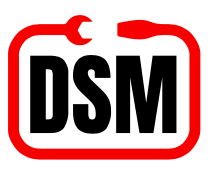The Unsung Hero: Unlocking Control with the 12V Single Channel Relay Module
In the fascinating world of electronics and home automation, there's a constant need to bridge the gap between low-power control signals from microcontrollers and higher-power devices like motors, lights, or appliances. You can't directly connect an Arduino's output pin to a mains-powered lamp – that's a recipe for disaster! This is where the humble yet incredibly powerful Relay Module 12V Single Channel steps in, acting as an essential electrical bridge, allowing your low-voltage circuits to safely command high-voltage or high-current loads.
This blog post will delve into the functionality, benefits, and myriad applications of this indispensable component, highlighting why a reliable 12V single-channel relay module should be a staple in every maker's toolkit.
What Exactly is a Relay Module?
At its core, a relay is an electrically operated switch. It uses a small amount of current to energize an electromagnet, which then physically pulls a switch mechanism, opening or closing a separate, higher-power circuit. The "module" aspect means this relay comes on a small Printed Circuit Board (PCB) with convenient terminals and often includes indicator LEDs and protection components (like a flyback diode) to make integration into your projects simple and safe.
- 12V: This specifies the voltage required to energize the relay's coil. When you apply 12V to the coil terminals, the electromagnet activates. This is a common and versatile voltage, often available from power supplies or dedicated drivers in electronic projects.
- Single Channel: This indicates that the module contains one independent relay, meaning it can control one separate electrical circuit. For projects requiring multiple controlled devices, you would either use multiple single-channel modules or a multi-channel relay module (e.g., 2-channel, 4-channel, 8-channel).
The Magic of Isolation: Why Use a Relay?
The primary reason for using a relay module is electrical isolation. Your low-voltage microcontroller (like an Arduino running on 5V or 3.3V) is sensitive and cannot directly handle the high currents and voltages often found in household appliances or industrial equipment. A relay provides a complete electrical separation between your control circuit and the load circuit:
- Safety: Protects your sensitive electronics (and yourself!) from high voltages and currents.
- Load Control: Allows a small signal to control a much larger current or voltage load.
- Versatility: Can switch both AC (Alternating Current) and DC (Direct Current) loads, depending on the relay's specifications.
- Noise Reduction: Since there's no direct electrical connection, the relay can help prevent electrical noise from the high-power circuit from affecting your delicate control electronics.
Key Features of a Good Quality 12V Single Channel Relay Module:
When choosing a relay module, look for these common features:
- Optocoupler Isolation: Many good quality modules include an optocoupler (also known as an opto-isolator). This component uses light to transmit a signal between two circuits, providing even stronger electrical isolation and preventing electrical noise from the load side from affecting the control side.
- Indicator LEDs: A power LED confirms the module is receiving power, and a status LED (often red or green) illuminates when the relay coil is energized, visually indicating whether the switch is open or closed.
- Screw Terminals: Convenient screw terminals for easily connecting the high-voltage/high-current load wires.
- Standard Pin Headers: Easy connection to your microcontroller using standard jumper wires.
- Normally Open (NO) and Normally Closed (NC) Contacts: Relays typically offer both NO and NC contacts.
- NO (Normally Open): The circuit is open (disconnected) when the coil is de-energized and closes (connected) when the coil is energized.
- NC (Normally Closed): The circuit is closed (connected) when the coil is de-energized and opens (disconnected) when the coil is energized. This flexibility allows you to choose the behavior best suited for your application (e.g., failsafe on/off).
Bringing Projects to Life: Common Applications
The Relay Module 12V Single Channel is a fundamental component in a vast array of projects:
- Home Automation: Control lights, fans, power outlets, sprinkler systems, or garage doors via Wi-Fi (e.g., with an ESP32 or ESP8266) or a simple switch.
- Robotics: Switching motors (e.g., higher current DC motors that the L298N can't handle alone), solenoids, or electromagnets.
- Automotive Projects: Controlling car accessories, custom lighting, or cooling fans using a low-current signal.
- Temperature Control: Switching heating elements or cooling fans in thermostats or incubation chambers.
- Pump Control: Automating irrigation systems or liquid transfer systems.
- Security Systems: Actuating sirens, lights, or door locks based on sensor input.
- DIY Appliances: Building custom control panels for hobbyist machinery or power tools.
- Access Control: Remotely opening and closing gates or doors.
Integrating with Your Microcontroller:
Connecting a 12V single channel relay module to a microcontroller is straightforward. You'll typically need:
- Power (VCC and GND): Connect these to a 12V power supply.
- Control Signal (IN): Connect this to a digital output pin on your microcontroller. When this pin goes HIGH (e.g., 5V from Arduino) or LOW (depending on the module's trigger logic, often active LOW), the relay will energize.
- Load Connections: Connect your high-power device to the Common (COM) and either Normally Open (NO) or Normally Closed (NC) terminals, depending on your desired functionality.
Conclusion: The Essential Link in Your Circuit
The Relay Module 12V Single Channel may not be the most glamorous component, but it is undoubtedly one of the most critical. It empowers your low-voltage control circuits to safely and effectively interact with the higher-power world, opening up a universe of possibilities for home automation, robotics, and countless other DIY projects. By understanding its function and selecting a good quality module, you're investing in the reliability and safety of your electronic creations. Make sure this unsung hero is always within reach in your electronics toolbox!

